Daimonji, Kyoto
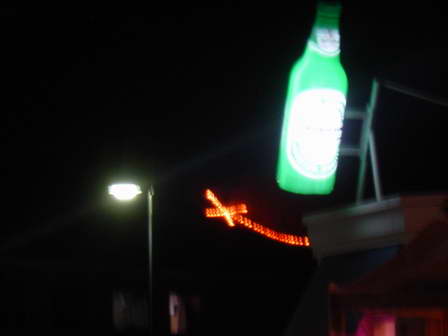
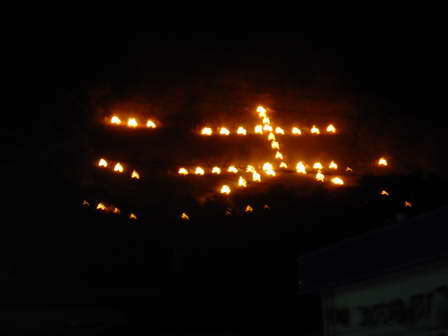
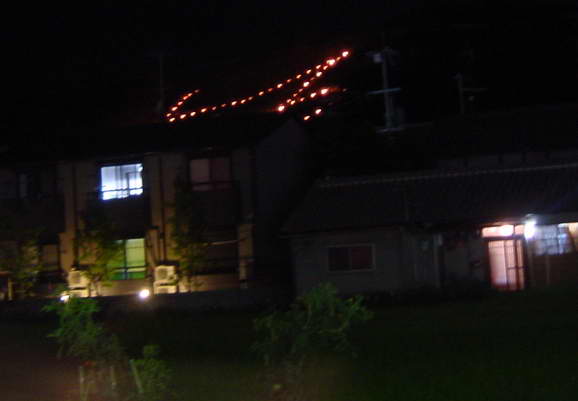
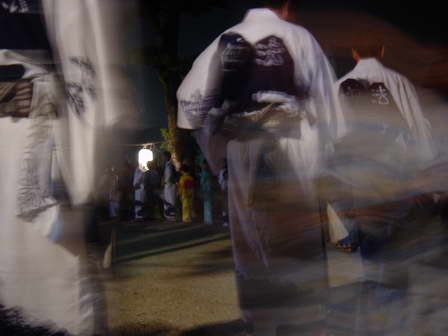
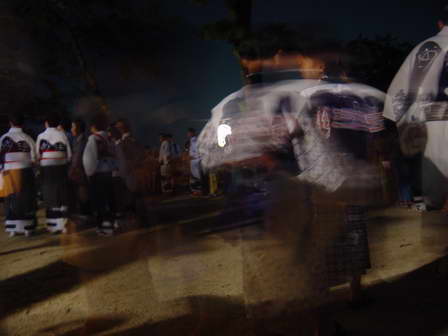
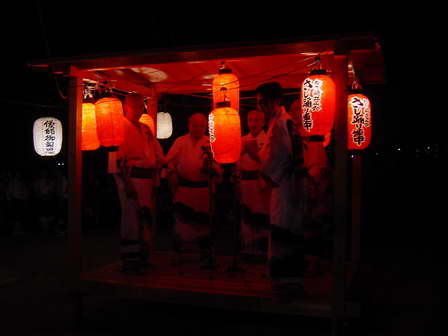
On August 16, around five hills of Kyoto fires are burnt which form the Chinese characters “dai” 大, “hō” 法, “myō” 妙, as well as the shapes of a ship, and of a torii gate.
Apparently all of Kyōto’s inhabitants, plus visitors, get out on the streets to see at least some of these fire-inscribed hills. (“Where are you going tonight? To see Dai or to see Hō?” – “Oh, we’re going “Dai” tonight”.) Beers are sold and drunk; the crowds themselves are set ablaze by the shining displays of camera phones and digital cameras, twinkle, twinkle, blink, blink.
I went to professor H.’s house, together with professor K., who knows professor H. since thirty years, together with professor K.’s son and daughter, both university students, with M., a philosopher from the USA, and E., his consort and owner of a crafts shop in Paris. We arrived around six o’clock and were immediately fed with delicious cold noodles, topped with eggs, cucumbers, and mushrooms. Further unspeakably delightful delicacies were served and duly appreciated. We drank beer. H. told delightful stories in delightful Japanese. A man, all smiles, all gentle, with a horribly real and lasting melancholy underneath.
Around eight we went out. Hō was not yet lit, so we marched on to a spot from where one could see Dai, apparently. Twinkle, blink, blink. Then Hō got lit, all stared and glared and eeeeehhhhh-d and sooooooo-d. After a period of admiration, we went further on to see Myō, in convenient proximity, and could also catch a glimpse of the ship (“funagata”, 舟形). Along one side of the dark street, there went the Haveseen-hō-wantsee-myō’s, along the other came the Haveseen-myō-wantsee-hō’s.
After further admiration H. led us up the hill to the Yōsenji temple (Nichiren sect), where the allegedly oldest Obon-dance of Japan was to be performed. A delightfully unexcited performance: men, women and children moved slowly in a circle and did not much else except for turning their fans twice per step, while a men’s choir here and a women’s choir there sang incantations of the Saddharmapuṇḍarīkasūtra and the Lotus-Sutra. After while they stopped, calm and relaxed. Equally relaxed a group of men climbed the stage, sang some more relaxed stuff, to which a smaller, but still considerable group of men, women and children danced in a circle, still slow, but with considerably more complex movements.
After a while of hanging out – no faintly religious ceremony I’ve witnessed so far deserves this casual verb for spectator presence more -, we went back to H.’s house. He immediately produced sweets, some of which K. had brought from Shiga: transparent jelly streams, floating in sweet bean paste or green tea paste. All assured each other of how formidable it was. Then H. said “sorosoro”. This meant it was time for us to leave, plain and simple. We thanked him and left. He had given us books published by his wife, a journalist who had meticulously sought out artifacts inspired by the Genji-Monogatari, and, where none were available for certain chapters, sought out artists and commissioned them to create some. He spoke of his wife in the past tense, and there was little doubt that she had passed away.
Spiderman was around, too.

